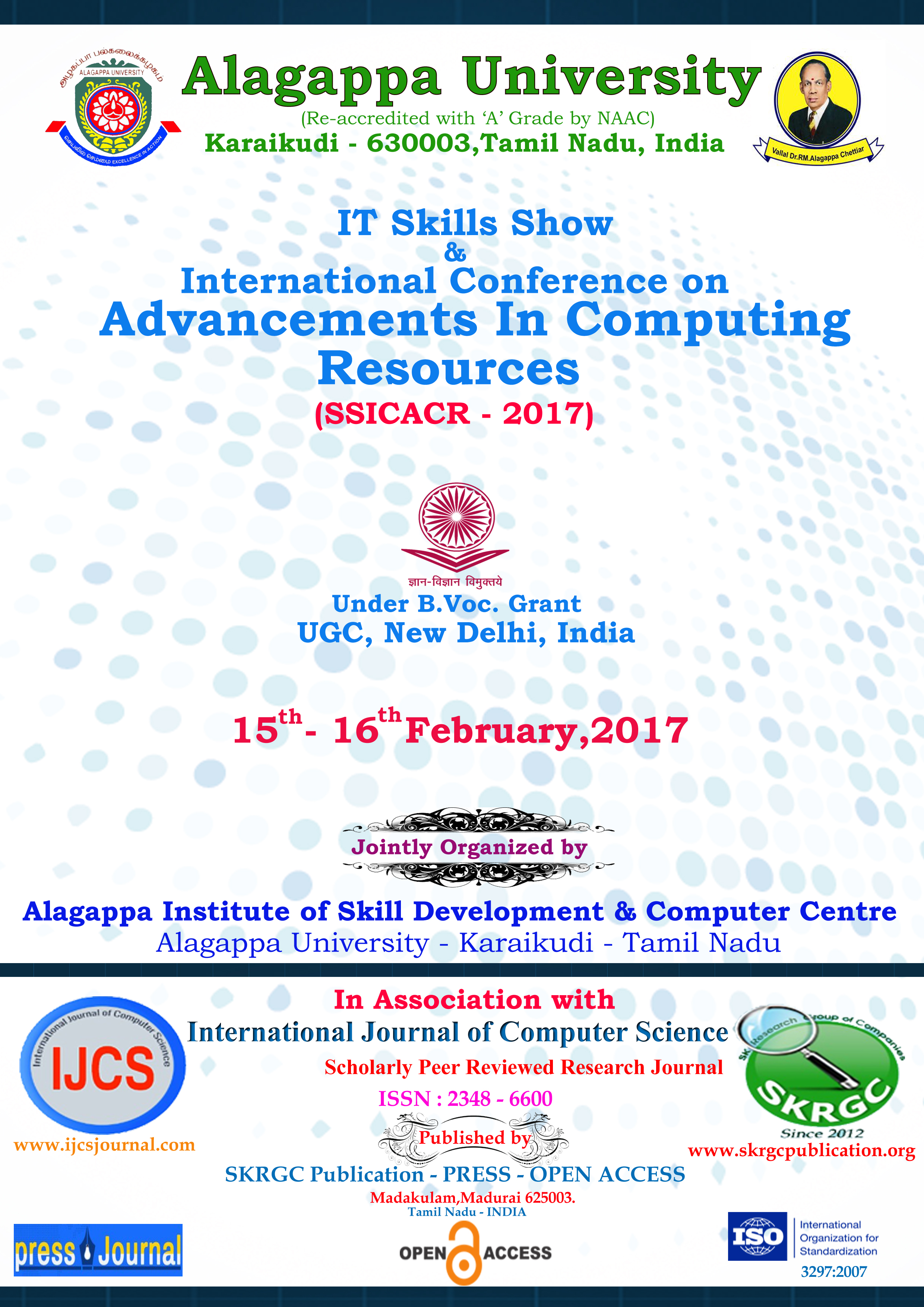A survey on Effective use of cloud computing in educational institutions
IT Skills Show & International Conference on Advancements in Computing Resources, (SSICACR-2017) 15 and 16 February 2017, Alagappa University, Karaikudi, Tamil Nadu, India. International Journal of Computer Science (IJCS) Published by SK Research Group of Companies (SKRGC)
Download this PDF format
Abstract
Technology evolution has always had an important impact on industry development, affecting even the most important system of the country, the education system. Education plays an important role in maintaining the economic growth of a country. Now a days the classroom teaching is changing and students are attracted more towards technology. Therefore in this changing environment, it’s important that we think about the latest technologies which will help the society with better teaching and learning process. One of such trending technology is Cloud Computing. It primarily refers to technology that delivers powerful computing resources via the web. Cloud computing is an excellent alternative for educational institutions which are especially under budget shortage in order to operate their information systems effectively without spending any more capital for the computers and network devices. Universities take advantage of available cloud-based applications offered by service providers and enable their own users/students to perform business and academic tasks. In this paper, we will review what the cloud computing infrastructure will provide in the educational arena, especially in the universities where the use of computers are more intensive and what can be done to increase the benefits of common applications for students and teachers.
References
1. Hawkins, R.J., 2002 “Ten Lessons for ICT and Education in the Developing World” in Dutta, S.,
2. Peter Mell and Tim Grance., 2009, “The NIST Definition of Cloud Computing”.
3. Microsoft Corporation. (2014, April 28). Education [Online]. Available:https://www.microsoft.com/education/ww /products/Pages/Products.aspx
4. IBM Cloud Academy. (2015, May 9). A collaborative community of leaders: Cloud Computing inEducation[Online]. Available: https://www.ibm.com/solutions/education/cloudaca demy/us/en/ Amazon Web Services. (2014, April 28).Education [Online].Available:https://aws.amazon.com/educati on/
5. Microsoft Corporation. (2014, April 28). Education [Online]. Available: https://www.microsoft.com/education/ww/products/ Pages/Products.aspx
6. MarinelaMircea and AncaIoanaAndreescu. 2011, Using Cloud Computing in Higher Education: A Strategy to Improve Agility in the Current Financial Crisis, Communications of the IBIMA.
7. Delic, K. A., & Riley, J. A. (2009). Enterprise Knowledge Clouds: Next Generation KM Systems? International Conference on Information,Process, and Knowledge Management, Cancun, MEXICO. 49-53.
8. Newton, J. (2009). Are SaaS & Cloud Computing Interchangeable Terms?.https://www.daniweb.com/blogs/entry3993. html
9. Jia Xu, Jia Yan, Liang He, Purui Su, Dengguo Feng. “CloudSEC: A Cloud Architecture for Composing Collaborative Security Services”, 2nd IEEE International Conference on Cloud Computing Technology and Science cloudcom; 2010, pp. 703-711.
10. Cloud Security Alliance. Security Guidance for Critical Areas of Focus in Cloud Computing V2.1; 2009, https://cloudsecurityalliance.org/csaguide.pdf
Keywords
Cloud computing, education system, trending technology, effectively, computing infrastructure, cloud-based applications

